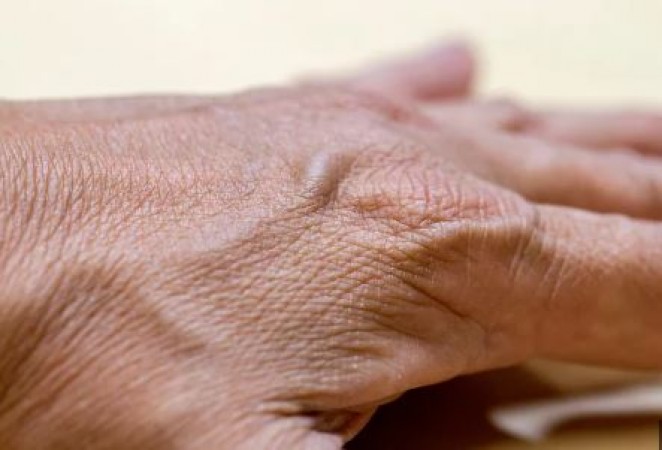Our hands, often overlooked, can be an invaluable indicator of our overall health. Beyond their everyday functions, they hold subtle clues that reflect our well-being. One such sign is the appearance of bulging veins. While they may seem benign, they can actually serve as a warning sign of underlying health issues. Understanding the reasons behind bulging veins and the appropriate treatments is crucial for maintaining optimal health.
Understanding Bulging Veins
Bulging veins, also known as varicose veins, occur when the veins become enlarged, twisted, or swollen. They often appear blue or purple and may protrude from the skin's surface. While they can occur in any part of the body, they are most commonly seen in the legs and hands.
Causes of Bulging Veins
Several factors contribute to the development of bulging veins:
- Age: As we age, the elasticity of our veins decreases, leading to weakened valves and bulging veins.
- Genetics: Family history plays a significant role in predisposing individuals to varicose veins.
- Occupation: Jobs that require prolonged standing or sitting can increase the risk of developing bulging veins.
- Pregnancy: Hormonal changes and increased pressure on the veins during pregnancy can cause varicose veins.
- Obesity: Excess weight puts added pressure on the veins, leading to vein enlargement.
- Inactive Lifestyle: Lack of physical activity can impair blood circulation, contributing to the development of bulging veins.
Signs and Symptoms
Recognizing the signs and symptoms of bulging veins is essential for early detection and treatment. Common indicators include:
- Visible, twisted veins on the hands or legs
- Aching or heaviness in the affected area
- Swelling, particularly after prolonged periods of standing or sitting
- Itching or burning sensation around the veins
When to Seek Medical Attention
While bulging veins are often harmless, they can sometimes indicate more serious health issues. It's important to consult a healthcare professional if you experience:
- Severe pain or swelling in the legs or hands
- Skin discoloration or ulcers near the veins
- Bleeding from the veins
Treatment Options
Several treatment options are available for managing bulging veins and relieving associated symptoms:
Lifestyle Changes
- Regular Exercise: Engaging in activities that promote blood circulation, such as walking or swimming, can help alleviate symptoms.
- Weight Management: Maintaining a healthy weight reduces pressure on the veins and prevents further enlargement.
- Elevating the Legs: Keeping the legs elevated above heart level can ease discomfort and reduce swelling.
- Avoiding Prolonged Sitting or Standing: Taking breaks to stretch and move around can prevent blood from pooling in the veins.
Compression Therapy
- Compression Stockings: These specialized stockings apply pressure to the legs, promoting better blood flow and reducing swelling.
Medical Procedures
- Sclerotherapy: This involves injecting a solution into the affected veins, causing them to collapse and fade from view.
- Endovenous Laser Ablation (EVLA): A minimally invasive procedure where a laser is used to seal off the affected veins, rerouting blood flow to healthier veins.
- Surgical Vein Stripping: In severe cases, surgical removal of the affected veins may be necessary.
Bulging veins serve as a visible reminder of our body's intricate vascular system. While they may be a cosmetic concern for some, they can also signal underlying health issues that require attention. By understanding the causes and treatment options for bulging veins, individuals can take proactive steps to maintain their vascular health and overall well-being.
Indian Business Leaders Embrace AI for Growth and Efficiency
India Adds 25 New Billionaires: Diverse Backgrounds, One Common Success Story
Renuka Jagtiani Emerges as India's Newest Billionaire: Looking At Landmark Group CEO's Success Story
